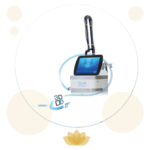
One of the more difficult symptoms of OCD that my patients deal with is the presence of mental compulsions.
Compulsions can be anything that a person does to alleviate anxiety, dread, or other unpleasant feelings. There are many types, but there are two main categories of compulsions: mental and behavioral. Behavioral compulsions, such as constantly checking the door locks or washing your hands too often, can be observe. Mental compulsions are a mental phenomenon that occurs in mind. Mental compulsions include:
- Silently counting or using “lucky words.”
- Rewinding past events and conversations.
- Analyzing why someone has a particular obsession.








